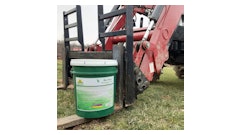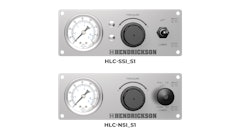
To maximize your investment in an oil analysis program, you must understand what you are trying to accomplish, be able to interpret the results you are given and be able to act on those results.
First define what you are trying to achieve, then establish program goals that will drive the proper testing. Consider extended oil drain intervals. A test package that monitors contamination and wear wouldn’t necessarily include the base number and oxidation/nitration tests necessary to extend oil drain intervals. Defining your program’s purpose, and always keeping in mind what you’re trying to accomplish, identifies the testing that should be done.
You may have to take a stepped approach to get where you eventually want to be. Good analysis programs should help discipline maintenance practices, so be sure to get a good handle on what preventive maintenance means to you first.
Next, measure the results to determine the success of the program. Fluid analysis generates data, and how well you manage that data is key to measuring program performance. You can set acceptable targets for the data, such as the cleanliness of the oil, using the ISO cleanliness guidelines.
Junk in, junk out
The adage “junk in, junk out” is particularly true with a lubricant analysis program.
Accuracy in documenting the type of equipment, the component being sampled and the product being used are all very important. The more detailed the information you provide the better. Be sure to identify the exact oil viscosity or SAE grade in addition to the brand and product name. Engine make and model, hours/miles on the engine, hours on the oil, amount of top-off oil added and the oil name/grade are all vital data points for the laboratory.
Identification of the make and model of the engine can be very useful to an oil analysis lab. For example, some Caterpillar engines use copper oil coolers, which sometimes show extremely high levels of copper for the first couple drain intervals.
Identify the equipment with the exact same nomenclature each time — otherwise, the computer might think it’s a different piece of equipment and start a new database. The more accurate information you give the lab, the more precise an analysis they can give you.
It is important to provide the lab with a clean sample of the fluids you are using. Different oils have different signatures and they use different additive-type chemistry. Unless the lab knows the signature and the initial viscosity grade of that fluid, they are not going to be able to do as good a job on the analysis.
Consistency adds value
 Accuracy in documenting the type of equipment, the component being sampled and the product being used is all very important. The more detailed the information you provide the better.
Accuracy in documenting the type of equipment, the component being sampled and the product being used is all very important. The more detailed the information you provide the better.
Collecting good oil samples is not as easy are you think, and companies need to recognize the importance of good sampling practices. The lab is going to be looking at particles of less than 10 microns in size. Particles in the air or from external sources can easily get into your sample after you’ve taken it. This will skew your results. You need a good, clean sample that is representative of the oil in the system.
Taking a good sample without a sample valve is quite an art; it is difficult to do in the dirty environment these machines run in. This is where an investment in oil sampling ports can pay a huge dividend. The more devices machines have to simplify the oil collection, the more the quality of the samples will go up.
It’s best to sample from an active stream in the system while the equipment is running and the oil is fairly warm. Sampling from the same place consistently is extremely important or you might see widely varying results from one analysis to the next.
A sample taken from an incorrect location can kill the accuracy of your oil analysis program. Never sample from the drain pan. It is full of contaminants from earlier oil drains and debris around the plug.
Understanding the differences between primary and secondary sampling ports can help you choose the proper sample location. Sampling locations vary from system to system but are typically located on a single return line prior to entering the sump or reservoir.
Proper housekeeping will greatly improve accuracy. Use a clean, dry bottle for drawing samples. Don’t open the bottle until you’re ready to take the sample. Seal it quickly once you have the sample. Leave a little room in the bottle so the lab technician can shake it up to disperse particles that have collected at the bottom.
Develop an action plan
Data will only help if you have an actionable plan in place. Once you receive sample data, you need to identify trends that pinpoint small problems before they become catastrophic failures, and use the laboratory’s recommendations to effect change in your maintenance practices.
Make sure the analysis program gets the emphasis it deserves by sending in samples as soon as possible after they are collected. You don’t want machines that are close to failure operating any longer than necessary.
Some labs today offer turnaround in less than 24 hours from the time they receive the samples, and results can often be instantly accessed online. You just have to decide who is going to get this information and who is responsible for getting it out to the shop if there is a problem.
It’s all about trends
 Keep in mind that no two pieces of equipment will show the exact same analysis results, even though they may be the same make and model. Don't try to say that because machine No. 1 is doing this it is going to happen to the other two.
Keep in mind that no two pieces of equipment will show the exact same analysis results, even though they may be the same make and model. Don't try to say that because machine No. 1 is doing this it is going to happen to the other two.
If you receive a “critical” result on a sample, resample to ensure that the initial oil sample was correct. Do not use one oil analysis instead of trending to make a large decision, i.e., prematurely overhauling equipment or shutting down a vital piece of equipment for inspection with a false negative lab result.
Keep in mind that no two pieces of equipment will show the exact same analysis results, even though they may be the same make and model. Don’t assume that because machine No. 1 is showing a certain result, it is going to happen with the others in your fleet.
With the amount of data an oil analysis program can generate, computerized data management tools can simplify record keeping. These tools allow you to perform all kinds of statistical analyses. Historical data collected helps put your current results in context.
Partner with A Reputable Lab
 Collecting good oil samples is not as easy and companies need to recognize the importance of good sampling practices. The lab is going to be looking at particles of less than 10 microns in size.Polaris Labs
Collecting good oil samples is not as easy and companies need to recognize the importance of good sampling practices. The lab is going to be looking at particles of less than 10 microns in size.Polaris Labs
ISO 17025 is the international standard for calibrations and testing laboratories. It ensures that a laboratory’s test methods are validated and that it has quality control procedures in place to monitor validity. It requires that equipment be calibrated, properly maintained and able to provide the accuracy and traceability needed for each test.
Make sure the lab is a good fit for your business. Some labs may specialize in industrial plant operations and others may have a better flavor for construction and off-road equipment. ET

























